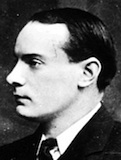
Dublin bankers cashed in Pádraig Pearse’s life insurance policy just weeks after he was executed in 1916 and used the money to redeem a series of promissory notes.
Documents have recently come to light which show that the central figure in the Easter Rising – who read the Proclamation of the Republic at the GPO – died owing a debt to Hibernian Bank.
Pearse had borrowed the money, the equivalent of about 100,000 euro today, to set up St Enda’s school and handed over his life insurance policy and the deeds of the family home as security.
He promised to repay the bank by signing promissory notes. Following the crushing of the rebellion, Pearse, aged 36, was court-martialled by the British authorities and executed by firing squad on May 3rd, 1916.
Although Ireland was in turmoil, the bank did not lose sight of its priorities and was preoccupied by his unpaid promissory notes and overdraft. Within days, Hibernian Bank wrote to the Sun Life Assurance Society in London demanding a payout on Pearse’s life policy.
But Sun Life executives in the City of London’s Threadneedle Street had been monitoring the unrest in Dublin and spotted that “the Life Assured was identical with the PH Pearse recently shot after trial by Court Martial”.
The British insurance company initially refused to pay on the grounds that if an assured person is “killed in a duel, or feloniously destroys himself, or dies by the hand of the common hangman, or public executioner, the Policy is void”.
However, Hibernian Bank did not let the matter rest and sought advice from its solicitors. The bank warned of legal proceedings and threatened to halt the sale of Sun Life products through its network of branches in Ireland.
Following a frantic and tetchy exchange of letters, Sun Life “desirous of dealing with the case in a liberal spirit” eventually caved in and paid the bank £329.16s.4d under an agreement “not to allow any proceeds to benefit the Estate of the Life Assured”.
The policy had been taken out by Pearse, who was unmarried, to benefit his mother Margaret (a widow) and his sisters Margaret Mary and Mary Brighid. But the deal cooked up between the bankers, insurance executives and lawyers ensured they did not receive a penny.
The file of correspondence, found in the estate papers of a solicitor, and expected to go under the hammer at an auction of historical memorabilia in Dublin next month.
Auctioneer Ian Whyte said: “This was a squalid dispute between two financial institutions over the estate of the dead patriot, who, before his death, was a valued customer of both.”
The records show that the payout only cleared half of Pearse’s debt to the bank. Hibernian Bank was taken over by Bank of Ireland in 1958.
Two years later, in 1960, the Pearse family home, Cullenswood House in Ranelagh, was sold, and some of the proceeds were used to pay off the balance of the outstanding promissory notes owed by Pádraig Pearse – 44 years after he “died for Ireland”.
The Sun Life Assurance Society was absorbed into an insurance corporation today known as Axa insurance.
![[Irish Republican News]](https://republican-news.org/graphics/title_gifs/rn.gif)
![[Irish Republican News]](https://republican-news.org/graphics/title_gifs/harp.gif)

